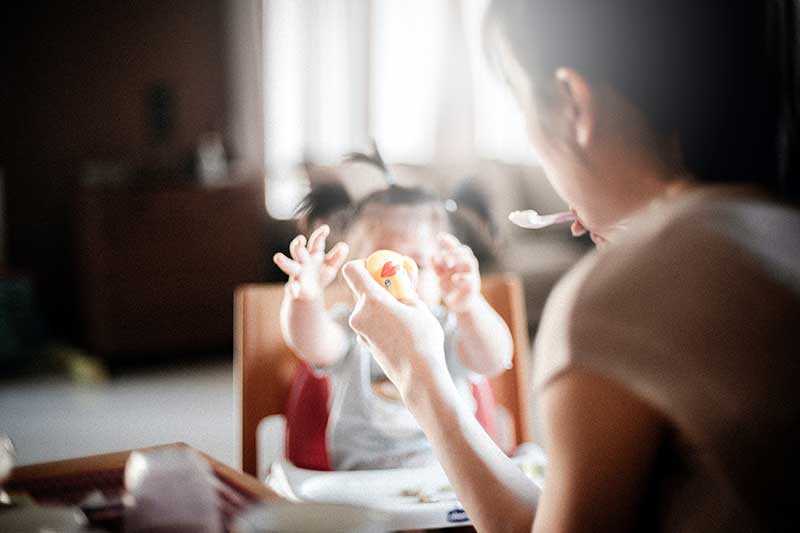How to Tell if Your Baby Is Choking or Gagging

Know the difference between the natural gag reflex and a life-threatening incident.
Whether you’re feeding your pēpi purée or finger foods, it’s important to be informed of the differences between gagging and choking. Many people mistake gagging for choking as they can seem similar if you’re unsure what to look for. However, gagging is a natural reflex that is a temporary occurrence and should resolve itself quickly but choking can be life threatening.
All humans have a gag reflex, but for babies, theirs is further forward in the mouth than that of adults, so it can be triggered more easily. You may notice your baby gags frequently when they first start solids but, essentially, it is their body’s way of preventing choking as they first learn to eat food. When the gag reflex is prompted, the muscles in the back of the throat contract and, with the tongue, thrust the object away from the throat and out of the mouth. Choking is when an object – like food – gets stuck and blocks the airway, preventing the person from being able to breathe.
Let’s look at how you can tell what your baby is doing:
SIGNS OF GAGGING
- Eyes watering
- Pushes tongue forward, out of their mouth
- Retching
- Vomiting
SIGNS OF CHOKING (NOT ALL MAY BE PRESENT)
- Coughing or gasping for air
- Difficulty breathing, may sound noisy
- Makes a sound like they are struggling
- Blue in the face
- Going silent
- Limp or unconscious
If your baby is choking, call an ambulance immediately on 111.



